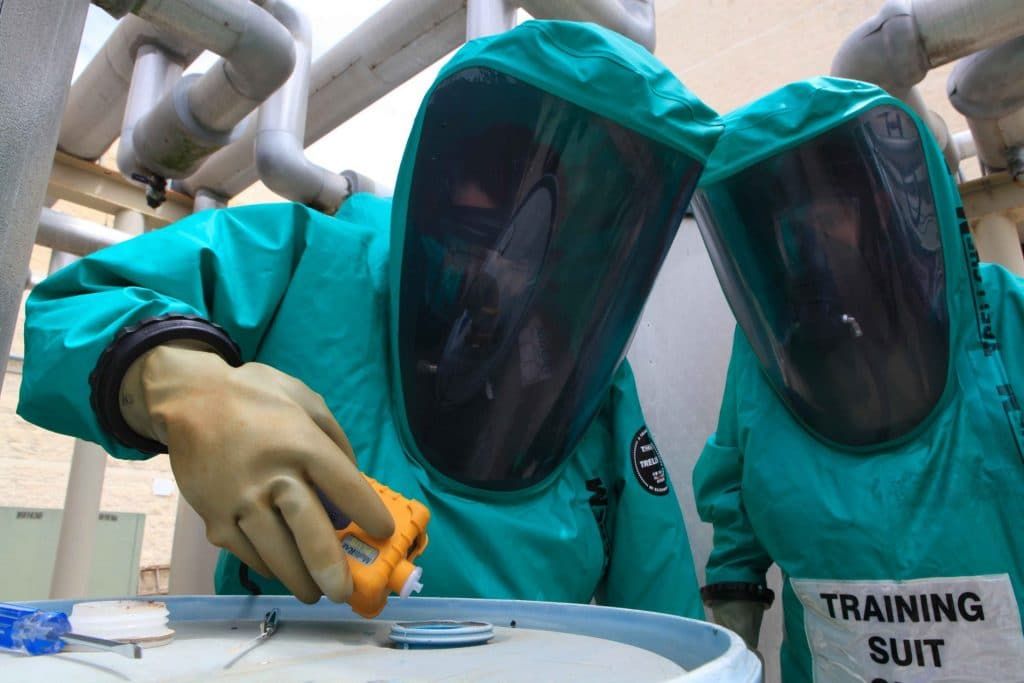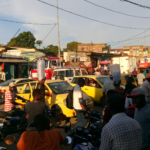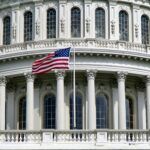Could the bioweapons treaty be another tool for addressing pandemics?
By Daniel Gerstein | March 12, 2021
 Chemical, biological, radiological, and nuclear defense specialists with the US Marine Corps practice responding to weapons of mass destruction scenarios. (US Marine Corps via Wikimedia Commons)
Chemical, biological, radiological, and nuclear defense specialists with the US Marine Corps practice responding to weapons of mass destruction scenarios. (US Marine Corps via Wikimedia Commons)
Since the beginning of the pandemic, the World Health Organization (WHO) has played a central role in updating the public, investigating the origin of the novel coronavirus, and encouraging public health measures around the globe. But the WHO has contended with critics on several fronts, including its initial handling of COVID-19 and the ongoing investigation into the virus’s origins. It’s perhaps easy to forget that outside of the spotlight shining on the WHO, there is a separate international agreement that is similar in some ways to the regulations that guide the health body—a treaty that has the potential to play a critical role in preventing or addressing deliberate biological attacks—which themselves could spark a pandemic: the Biological Weapons Convention.
The bioweapons treaty has overlapping interests with the International Health Regulations that underpin the WHO. Those require all countries to have the ability to “detect, assess, report, and respond to public health events.” The bioweapons treaty has the aim of excluding “completely the possibility of … biological agents and toxins being used as weapons.” Both depend on governments having the ability to conduct disease surveillance, provide personal protective equipment and medical countermeasures, and ensure biosafety and biosecurity in labs. And these capabilities and resources are important for responding to or mitigating either a naturally occurring event or a deliberate attack. Yet during the pandemic, neither the public nor expert community has paid much attention to the role the bioweapons treaty could play.
However, in light of COVID-19, perhaps now is the right time to revisit the 46-year-old treaty and make it a better tool against future biological threats, including both deliberate biological attacks and pandemics. The members of the Biological Weapons Convention are set to meet this fall for an every-five-year review conference. This forum could provide an important opportunity to consider the implications of COVID-19 on the likelihood of, preparations for, and response to a deliberate biological attack.
COVID-19, perceptions, and bioweapons. Most if not all experts see no evidence that COVID-19 resulted from a deliberate act. And while some have called for greater scrutiny of the institutions that were conducting coronavirus research in Wuhan, China, where the pandemic began, there is no firm evidence that the virus escaped from a laboratory. Yet the bioweapons review conference discussions this fall could provide a forum to take stock of what governments have learned in responding to the pandemic and to redouble coordinated efforts to stop COVID-19 once and for all.
The pandemic suggests several related areas for bioweapons treaty members to consider and debate. For example, how has the threshold for a deliberate attack been affected by COVID-19?
Some countries have done phenomenally well in keeping the virus at bay within their borders, while others have seen devastating wave after wave of infections. The United States has logged more than 29 million cases of COVID-19. Much larger China meanwhile, where the pandemic began, has had just 100,000.
At the review conference, bioweapons treaty members should examine how the threat of biological weapons may have evolved as a result of these uneven responses to COVID-19. Have countries or perhaps terrorist organizations, seeing the death and disruption caused by COVID-19, come to view biological weapons as a more powerful way of achieve their goals? Or have they been dissuaded by the fact that diseases like COVID-19 seem difficult to target or control? What might governments do to reduce the risk of future large-scale biological attacks or naturally occurring pandemics?
A revamped role for the bioweapons treaty? International collaboration between governments, industry, nonprofits, and academia has been critical to fighting the pandemic, a fact underscored by the rapid development of vaccines, many through public-private partnerships. But world governments haven’t been able to properly fund the distribution of the inoculations to much of the globe. Indeed, some people in developing countries may be waiting until 2024 to get vaccinated. Unfortunately, the shortfalls in messaging, policy and guidance, and vaccine distribution led to additional spread of the virus, proliferation of inaccurate information, a global competition for access to personal protective equipment, and vaccine nationalism. The members of the bioweapons treaty could work to address these issues.
Some investments governments made in science and technology have paid off handsomely, particularly biomedical research, like those which allowed vaccine makers to so quickly produce effective inoculations. Projects like the Human Genome Project and the research behind messenger RNA were critical to scientists eventually being able to produce the first two vaccines that received emergency use authorization in the United States. Bioweapons treaty members should work to identify future areas for research and development that could be beneficial in preparing for possible future pandemics or biological attacks.
However, while investments paved the way for the success of the vaccines, in other areas, research and development shortfalls contributed to the lackluster government response to COVID-19 in the United States and elsewhere and would likely do so in the event of a deliberate biological attack, as well. Biosurveillance is clearly an area where government investment did not match what was needed. Biosurveillance includes a number of elements—environmental sampling (of air and within sewage systems, for example); point of care diagnostic tests that are accurate and rapid; the capacity to genetically sequence large numbers of samples quickly to accurately assess virus shift and drift; contact tracing capability; and well-staffed public health organizations able to assist with surveilling the environment and supporting decisionmakers. Identifying and redoubling efforts in underperforming areas such as biosurveillance would be beneficial.
Time to address difficult issues?The Biological Weapons Convention lacks the personnel to be very useful in the event of a significant biological attack, a shortfall that should be addressed when the treaty’s members meet this fall. The undersized implementation support unit for the treaty—composed of just three full-time staff—can do little more than coordinate regular meetings and conferences. The support staff would likely not play any role in response to a biological attack.
In contrast, the Chemical Weapons Convention has the Organization for the Prohibition of Chemical Weapons, which had the capability, for example, to monitor the elimination of declared chemical weapons in Syria. Such a mission would be impossible for the support unit behind the bioweapons treaty. Consider if governments thought COVID-19 had resulted from a deliberate attack and suspicious laboratories had been identified—wouldn’t a similar body of professionals be useful to investigate the suspect facilities?
Since the earliest days of the Biological Weapons Convention, some have questioned whether it should be revised to address one of the biggest criticisms of the treaty, the lack of transparency and verification provisions. The arms control community has debated this point since the treaty came into force in 1975. Participants in the every-five-year review conference meetings frequently discuss the issue. It’s a heated topic and it even caused the United States delegation to walk out of the 2001 meeting due to a draft verification protocol that it felt contained objectionable language. While many nations might still reject the verification protocol language, perhaps this age of COVID-19 is the right time to reconsider whether some limited mechanisms for increasing transparency might be warranted.
The COVID-19 pandemic has demonstrated that no country is safe until every country has adequate vaccinations and medical countermeasures. Until that occurs, the virus will continue to infect populations and mutate, remaining a global threat.
When US President Joe Biden offered that “things would be back to normal” by next holiday season, he was speaking for the United States. That will not be true around the globe. By sharing the vaccines with other nations, all countries benefit. If a biological attack sparked an outbreak or pandemic, countries that are part of the Biological Weapons Convention would have to share resources, as one of the articles of the treaty requires member states “provide or support assistance” for any other country affected by a biological attack. By ensuring available mechanisms for doing so, governments could better respond to this pandemic as well as prepare for the future.
Bioweapons treaty members should use this fall’s review conference to finally begin to address the difficult issues regarding preparation for future biological attacks or pandemics. The COVID-19 crisis should be all the incentive necessary to have these serious discussions.
Together, we make the world safer.
The Bulletin elevates expert voices above the noise. But as an independent nonprofit organization, our operations depend on the support of readers like you. Help us continue to deliver quality journalism that holds leaders accountable. Your support of our work at any level is important. In return, we promise our coverage will be understandable, influential, vigilant, solution-oriented, and fair-minded. Together we can make a difference.
Keywords: Biological Weapons Convention, Coronavirus
Topics: Disruptive Technologies, Uncategorized
















No one seems to focus on the question of where did this virus come from. It came from China, one of the leaders in biological warfare. I don’t say this lightly. They wish to weaken all countries and have a slow takeover while everyone is watching. They have legislation in the US . They want to control all the markets Oil, coal, etc. And their junk fishing fleets are invading all the areas of the world. Yes they have even gone as far as Peru and Venezuela and countries down south. Even before Covid there was N1A1.. Keep a sharp… Read more »